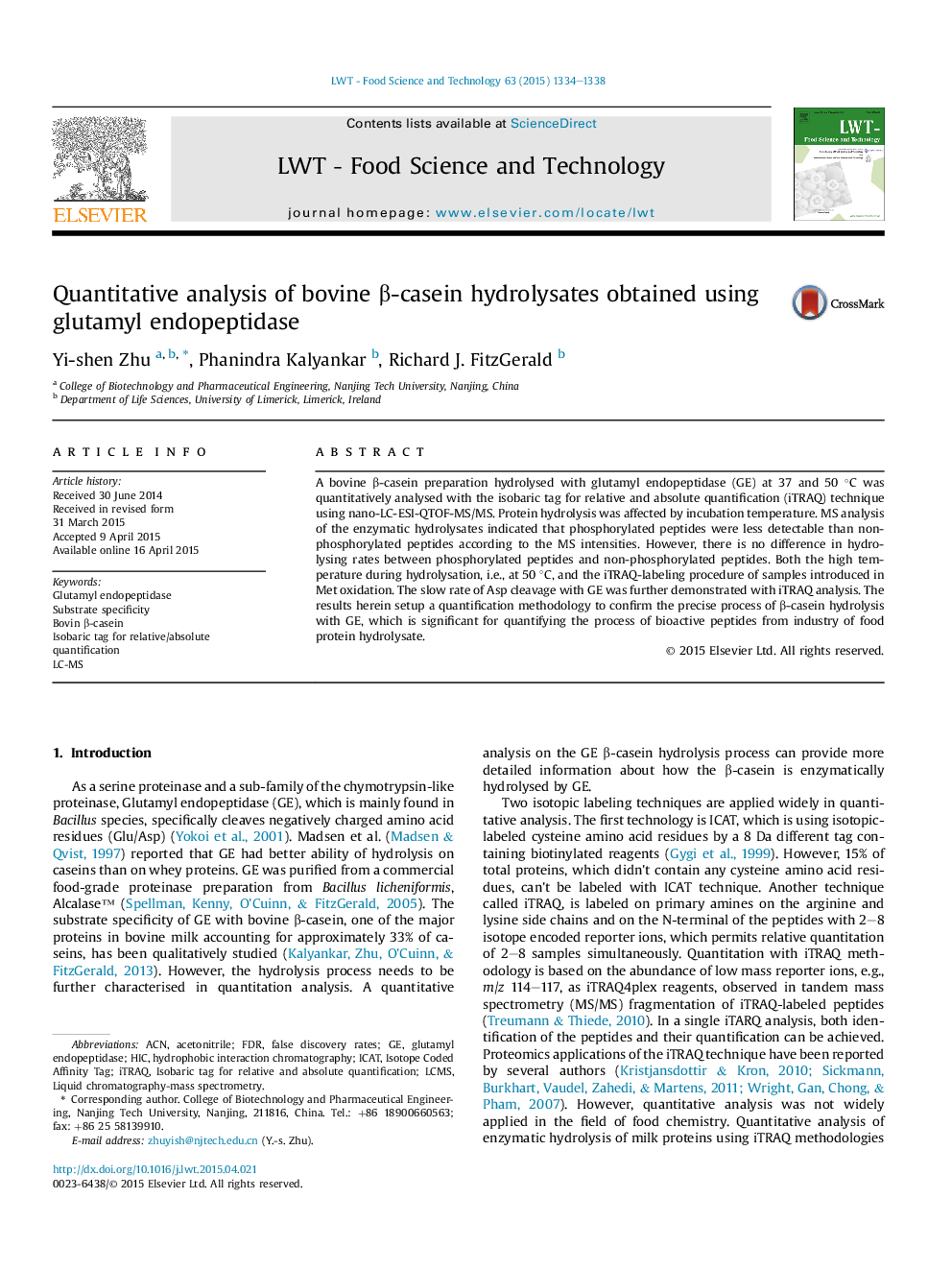| Article ID | Journal | Published Year | Pages | File Type |
|---|---|---|---|---|
| 6400574 | LWT - Food Science and Technology | 2015 | 5 Pages |
â¢Incubation temperature was shown to affect protein hydrolysis.â¢There is no difference in hydrolysing rates between phosphorylated peptides and non-phosphorylated peptides.â¢Oxidization of Met were observed in hydrolysis and iTRAQ-labeling procedure.â¢High temperature, i.e., at 50 °C, can generate more oxidised Met in hydrolysis.
A bovine β-casein preparation hydrolysed with glutamyl endopeptidase (GE) at 37 and 50 °C was quantitatively analysed with the isobaric tag for relative and absolute quantification (iTRAQ) technique using nano-LC-ESI-QTOF-MS/MS. Protein hydrolysis was affected by incubation temperature. MS analysis of the enzymatic hydrolysates indicated that phosphorylated peptides were less detectable than non-phosphorylated peptides according to the MS intensities. However, there is no difference in hydrolysing rates between phosphorylated peptides and non-phosphorylated peptides. Both the high temperature during hydrolysation, i.e., at 50 °C, and the iTRAQ-labeling procedure of samples introduced in Met oxidation. The slow rate of Asp cleavage with GE was further demonstrated with iTRAQ analysis. The results herein setup a quantification methodology to confirm the precise process of β-casein hydrolysis with GE, which is significant for quantifying the process of bioactive peptides from industry of food protein hydrolysate.
